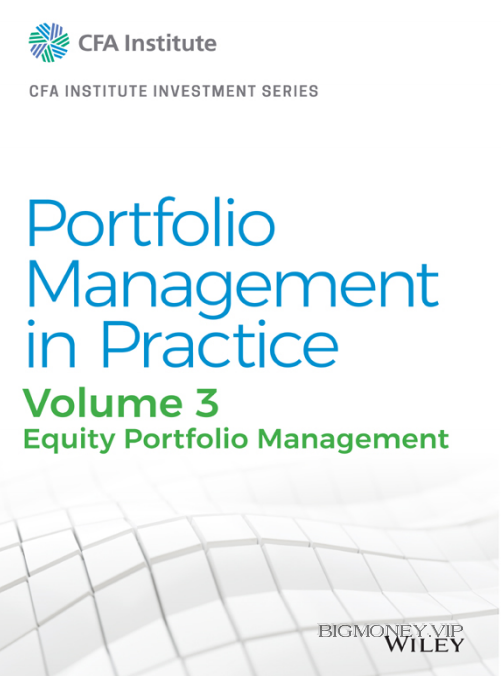Portfolio Management in Practice, Volume 3: Equity Portfolio Management

CHAPTER 1
OVERVIEW OF EQUITY SECURITIES
Ryan C. Fuhrmann CFA
Asjeet S. Lamba PhD, CFA
LEARNING OUTCOMES
The candidate should be able to:
describe characteristics of types of equity securities;
describe differences in voting rights and other ownership
characteristics among different equity classes;
distinguish between public and private equity securities;
describe methods for investing in non-domestic equity securities;
compare the risk and return characteristics of different types of equity
securities;
explain the role of equity securities in the financing of a company’s
assets;
distinguish between the market value and book value of equity
securities;
compare a company’s cost of equity, its (accounting) return on equity,
and investors’ required rates of return.
1. INTRODUCTION
Equity securities represent ownership claims on a company’s net assets. As
an asset class, equity plays a fundamental role in investment analysis and
portfolio management because it represents a significant portion of many
individual and institutional investment portfolios.
The study of equity securities is important for many reasons. First, the
decision on how much of a client’s portfolio to allocate to equities affects
the risk and return characteristics of the entire portfolio. Second, different
types of equity securities have different ownership claims on a company’s
net assets, which affect their risk and return characteristics in different
ways. Finally, variations in the features of equity securities are reflected in
their market prices, so it is important to understand the valuation
implications of these features.
This chapter provides an overview of equity securities and their different
features and establishes the background required to analyze and value
equity securities in a global context. It addresses the following questions:
What distinguishes common shares from preference shares, and what
purposes do these securities serve in financing a company’s
operations?
What are convertible preference shares, and why are they often used to
raise equity for unseasoned or highly risky companies?
What are private equity securities, and how do they differ from public
equity securities?
What are depository receipts and their various types, and what is the
rationale for investing in them?
What are the risk factors involved in investing in equity securities?
How do equity securities create company value?
What is the relationship between a company’s cost of equity, its return
on equity, and investors’ required rate of return?
The remainder of this chapter is organized as follows. Section 2 provides an
overview of global equity markets and their historical performance. Section
3 examines the different types and characteristics of equity securities, and
Section 4 outlines the differences between public and private equity
securities. Section 5 provides an overview of the various types of equity
securities listed and traded in global markets. Section 6 discusses the risk
and return characteristics of equity securities. Section 7 examines the role
of equity securities in creating company value and the relationship between
Portfolio Management in Practice, Volume 3: Equity Portfolio Management
Portfolio Management in Practice, Volume 2: Asset Allocation by CFA Institute




